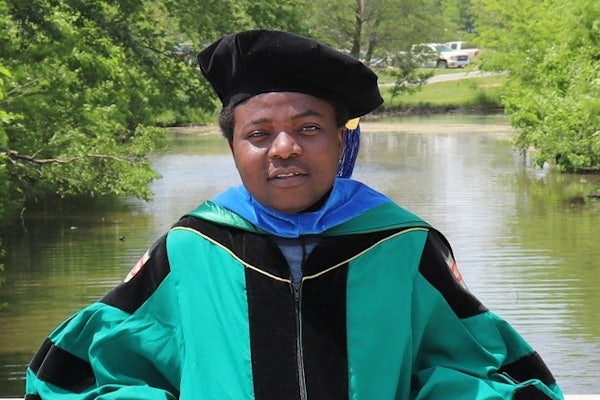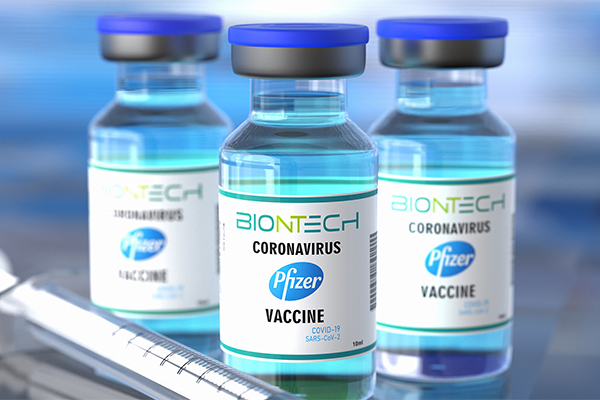The most important work: Creating a vaccine for COVID-19
McKelvey Engineering alumnus Shopera is among four WashU alumni working around-the-clock on the Pfizer-BioNTech vaccine for COVID-19

One of the first projects Tatenda Shopera, MSChE ’16, PhD ’18, worked on as a PhD student at the McKelvey School of Engineering was with Tae Seok Moon, associate professor of energy, environmental and chemical engineering. Shopera remembers the day Moon selected him to join the lab. “He believed in me from day one,” Shopera says. “I consider myself very fortunate to have had him as my adviser.”
The engineering school project, funded by the Bill and Melinda Gates Foundation, was aimed at ending the transmission of dangerous parasites in developing countries.
“I’ve always been drawn to these kinds of projects,” Shopera says of his desire to help others. “This was a motivating factor in going to work at Pfizer.”
Since March 2020 when Pfizer and German-based BioNTech announced plans to jointly develop a COVID-19 vaccine, Shopera says the pace has been fast, the challenges dynamic, and the work — to put it mildly — rewarding.
“I wanted to develop medicines and vaccines. I thought being at Pfizer might give me that opportunity,” he says.
He very quickly got the opportunity he sought.
Shopera went to work as a senior scientist at Pfizer in June 2019. The first case of the novel coronavirus was reported six months later. Three months after that, he was pulled into a COVID project.

As a process scientist, he worked to fine-tune the conditions in the environment to ensure the quality and consistency of the final product, a medicine or a vaccine.
“Think of it as cooking,” he says. At home, you have a recipe, but you also taste as you cook. You know you need a certain amount of, for instance, salt, he says. “But you want it to be tasty, so you have an idea that this is too much salt, or not enough water. In this way, you are manufacturing food and testing to assure quality.”
Shopera says his work is analogous, but instead of cooking for friends and family, when he first joined Pfizer, he was feeding cell cultures to develop manufacturing processes at laboratory scale. “We monitor and ask what do these cells like? What is it they do not like?” It’s not just a matter of keeping the cells happy. “If they don’t like the recipe, or the conditions are unsuitable, they are not going to give you what you are looking for.”
When he moved to the COVID-19 project, Shopera’s process development experience with cell cultures was put to use for another platform technology: mRNA, the so-called software that translates the instructions in our DNA into action in our cells. The correct recipe in his development lab yields a plasmid DNA encoded with a bit of mRNA that has instructions for making an antigen for SARS-CoV-2, the virus responsible for COVID-19.
This is the basis for the vaccine, which bypasses our DNA and directly tells our own cells to produce the antigen that stimulates our immune system, preparing it for an encounter with the real thing.
For Shopera, not only has he helped to make a life-saving vaccine, he is also living out the answer to a question he’s had for many years.
“I grew up in Zimbabwe. For the most part, we import medicines,” he says. “I always had that question: Where do medicines come from? Where do vaccines come from? Who comes up with the idea?” he says.
“Now fast forward years later, I’m part of the team that is developing the vaccine and medicines.”
Back to News


